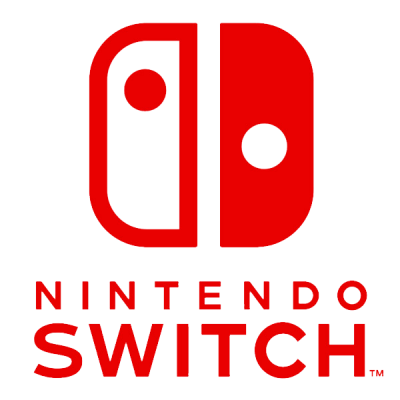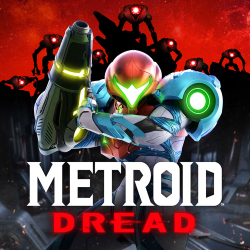REVIEWS
Metroid Dread Review | Footsteps
This is not the greatest game of the year, no, this is just a tribute.
Lucas White
Oct 13, 2021
Metroid Dread is a lot of things. It’s a long-lost sequel over a decade in the making. It’s a bizarre flashpoint for emulation discourse. It’s the end of a storyline that started on the Famicom Disk System.
Since the beginning of Nintendo, Metroid has been around in some form or another, struggling along as the company’s cool but unsuccessful sci-fi cult darling. With Castlevania fumbler and Metroid II remake studio MercurySteam once again doing the muscle work, Metroid Dread is all of those things and more.
It’s a lot to process.
Metroid Dread Review
First of all, Metroid Dread is thoroughly traditional. You’ve seen that in the day one reviews no doubt, the notion that this feels like Metroid back to its roots, whatever that means.
But, like the previous MercurySteam Metroid romp, Dread takes Super Metroid as its foundation and builds a bunch of modern conventions and technical upgrades on top.
You explore a massive map, pass obstacles via hidden abilities and fight some mean bosses by feeding them hundreds of missiles. It’s the Metroid formula but in HD for the first time.
In gaming today, “Metroidvania” is a common tag you’ll find in any store. This genre, once obscure, is everywhere from indie darlings to AAA blockbusters. Metroid was first, arguably, and you can tell here. Everything just explains itself, from the missiles to the bombs and everything in-between.
Metroid Dread is straightforward, except for when it isn’t. Despite how much fun I had overall exploring this game’s mysterious planet, the moment to moment was often unpleasant. Dread follows the “bigger and better” school of thought as a sequel.
The maps are enormous, and getting through everything requires granular progress. You upgrade your missiles and regular beams several times, along with new twists on mainstay abilities. The map is an overdetailed mess, overloading the player with information that isn’t even needed at times.
Related: Essential Metroid Titles and Where to Play Them
The game’s biggest weakness is that sense of overdoing it. It’s like this version of Metroid Dread, the one that eventually came out of all the starts and stops over the years, started as a piece of overeager fanfiction.
MercurySteam’s team clearly has a love for Samus Aran and her wide array of tools and weapons. But that reverence often feels shallow when the end result is just, “Samus does all the things! Badass!”
This feeds into a big problem with accessibility. Metroid Dread demands a lot of your hands and fingers, especially during the increasingly intense boss encounters. There’s been some “is this too hard” discourse, but I think that’s a byproduct of ergonomics rather than difficulty.
Mastering Dread’s kit means serious hand/eye multitasking, and anyone with any sort of physical barrier will have a hard time. Not to mention the map, which is all kinds of visual noise I personally struggled with at times as someone who is actively fighting ADHD.
Sure, that’s a personal anecdote, but it’s probably one of many roadblocks outside of the game players may run into. The massive maps also make backtracking more and more of a chore, especially since the fast travel points are often just parts of navigation puzzles, take forever to run to and force you to watch little cutscenes/loading sequences.
There are so many moments governed by one way routes for so long, it often feels like too little too late when you finally do open up a shortcut or two.
That said, taking everything at face value, Metroid Dread is a blast to play. Samus is all kinds of mobile here, able to dash across, up and down through her surroundings like a beefy robot ninja lady.
If you can get into a flow with sliding, jumping, swinging, rolling and such, the speed and agility feels great. But it’s just as easy to run into a big fumble, especially when timing and accuracy suddenly becomes an issue.
Metroid games have often used combat scenarios as flavor rather than focus, but Metroid Dread flips that around in ways that aren’t compatible with the foundations being built upon. Samus is kinda limited in specific ways, and when you crash into those limits during a high speed action sequence it can be easy to trip over
Yourself. Especially since a big part of Dread is E.M.M.I., a robotic death machine that will stalk Samus if she enters its territory.
At first, these moments with E.M.M.I. encounters truly earn that “Dread” title. From the beeping noises the robots make when searching to the way their bodies contort to adjust flawlessly to your movements, the creep factor is there.
But the way these encounters are designed, specifically the way you can finally take these foes down, is a long road to frustrating tedium. Defeating an E.M.M.I. involves a convoluted powerup that alters the game’s controls and perspective, and requires moments of sustained fire in order to activate a certain vulnerability.
Because videogames, these encounters are all the same chain of events, with increasing challenge. The problem is that forces the map to accommodate for that challenge, and you end up having to do a bunch of parkour challenges to find the designated patch of ground made long enough for that sustained fire.
To that point, you often end up in small loops when it’s time to take on an E.M.M.I., so it starts to feel like a routine in a bad way, sapping the “Dread” from these encounters and turning them into annoying math problems.
It’s kind of a bummer, especially since those earlier moments are so pitch perfect. I certainly dreaded the last couple of these fights, but only because I was tired of dealing with them. It sounds like I hate this game, doesn’t it? These are all issues that stuck around in my head for sure, but like I said earlier I had a great time overall.
Every little moment of frustration was connected by much longer stretches of classic Metroidvania play. Exploring, finding little hidden items, getting those big upgrades you know opened up a lot, all of that is here and bountiful.
I may have some beef with a few decisions here and there, but again it’s clear MercurySteam’s team knows why these games are so well-loved by their fans. But like a certain other “Vania,” you can see and feel all the enthusiasm and reverence that comes at the expense of things like progress, subtlety or storytelling.
Metroid Dread is a big ol’ Metroid map with lots of Metroidy things to do and it’s a big Metroid party. But what does it do with the material? What story is the map telling, what’s the driving force behind all the familiar shenanigans?
When the cutscenes kick on and the dialogue shows up, I get an idea of where Dread is headed and how it’s attempting to fit, extend and even conclude the story. But playing the game versus watching it often feel like two different places.
I’m all over the place with Metroid Dread, and I don’t think my mind will settle down on it for a long time past this initial review. This game is absolutely a well made, videogame-ass videogame with tons of secrets, cool action, more exploration than I know what to do with and then some.
But what often made Metroid games of the past so good was their atmosphere, their careful blending of game and narrative, their willingness to slow down and tell a story without words. In comparison, Metroid Dread feels more like a tribute to those games than the next in line.
It’s all flashy and high octane, turning Samus into a Hollywood action hero who kicks ass and takes no shit. It’s “Metroid is awesome” blown up into a major game release, with some canon-extending cutscenes bolted on. It’s certainly more thoughtful than Samus “entirely missed the point” Returns, a definite improvement. But I expected more, and I don’t think that’s unreasonable.
Leer en su medio original


